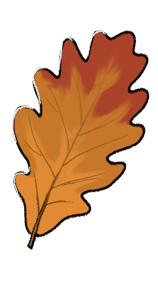According to that quoted in http://www.bio.hw.ac.uk/edintox/enviro.htm (a cool site):
Environmental toxicology and ecotoxicology are terms used to describe the scientific study of the adverse effects on living organisms that chemicals can have when released into the natural environment.
There is a tendency to apply the term "environmental toxicology" only to the study of direct effects of environmental chemicals on human beings and the term "ecotoxicology" only to the study of the effects of chemicals on ecosystems and their nonhuman components.
More information
More information
Subcategories 7
Related categories 8
Sites 7
Information about studies of contaminants in the Arctic environment, including sources, transport, and effects on biota and humans.
Fully searchable and selectively retrievable databases of pesticide toxicology and environmental chemistry information.
Provides ecotoxicology testing products and services. Describes the Lemna (duckweed) bioassay test for detecting and evaluating hazardous substances in ecosystems.
Specialists for the supply and construction of ecotoxicology testing equipment and agricultural research equipment.
Provides information on the laboratory, the research being carried out, the staff, publications and equipment.
New York Times article about the fact that striped bass are thriving in the Hudson River because PCBs deter fishing, even though PCBs actually are harmful to the fish. However, fish in Newark Harbor have adapted to contaminants. [Requires free registration.]
(March 25, 2003)
Researchers found an unidentified organohalogen contaminant in the eggs of Atlantic and Pacific Ocean seabirds. If a marine organism is the source, this would be the first instance of a naturally produced organohalogen accumulating in the eggs of wild birds.
(December 11, 1998)
Provides information on the laboratory, the research being carried out, the staff, publications and equipment.
Fully searchable and selectively retrievable databases of pesticide toxicology and environmental chemistry information.
Information about studies of contaminants in the Arctic environment, including sources, transport, and effects on biota and humans.
Specialists for the supply and construction of ecotoxicology testing equipment and agricultural research equipment.
Provides ecotoxicology testing products and services. Describes the Lemna (duckweed) bioassay test for detecting and evaluating hazardous substances in ecosystems.
New York Times article about the fact that striped bass are thriving in the Hudson River because PCBs deter fishing, even though PCBs actually are harmful to the fish. However, fish in Newark Harbor have adapted to contaminants. [Requires free registration.]
(March 25, 2003)
Researchers found an unidentified organohalogen contaminant in the eggs of Atlantic and Pacific Ocean seabirds. If a marine organism is the source, this would be the first instance of a naturally produced organohalogen accumulating in the eggs of wild birds.
(December 11, 1998)

Last update:
November 23, 2022 at 6:45:03 UTC

Check out
Shopping: Death Care: Urns
- Recently edited by merlin1
- Recently edited by merlin1